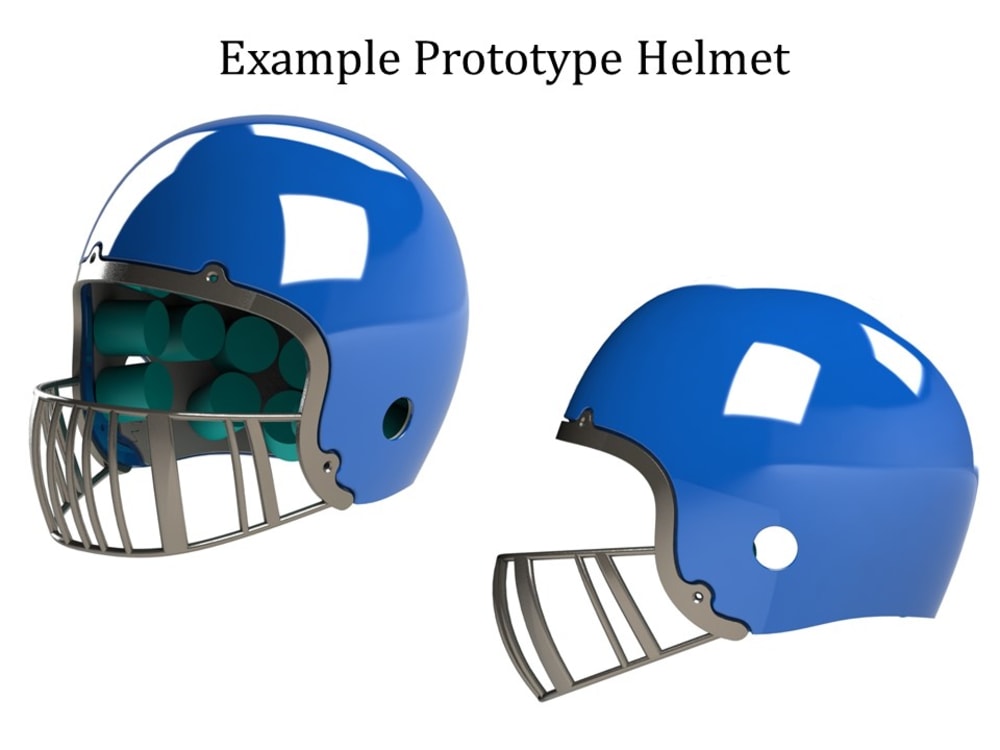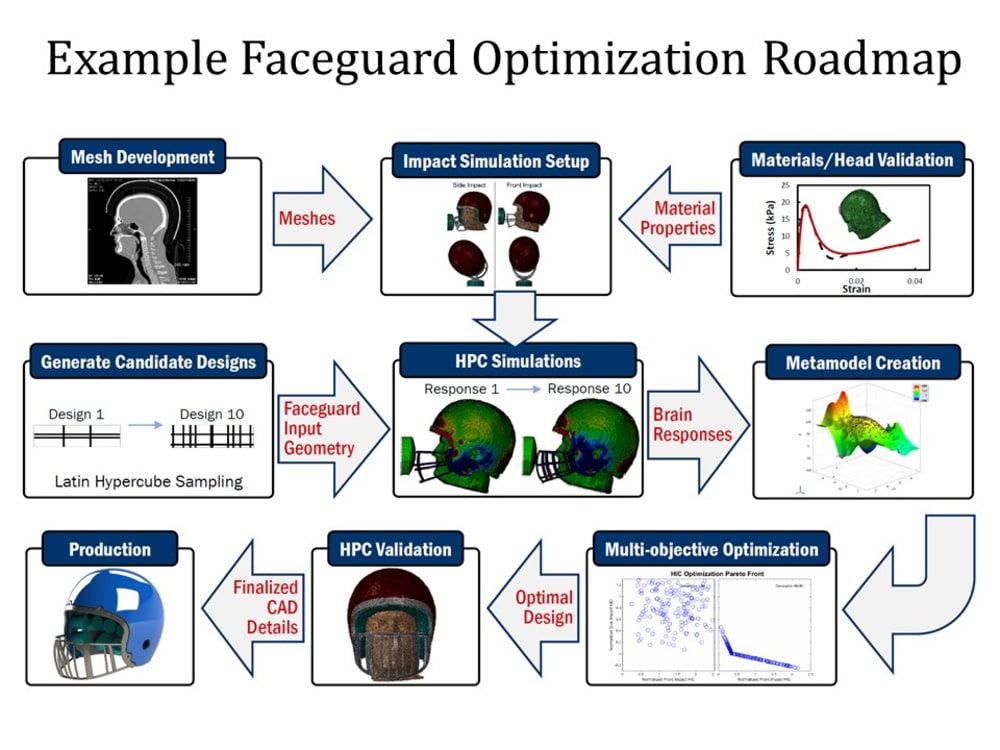
We use a robust, high-accuracy simulation model of the human head to optimize an American football helmet to reduce the likelihood of concussion and the long term development of Chronic Traumatic Encephalopathy (CTE). Sports related concussions have been in the spotlight ever since the discovery of CTE, which is a neuro-degenerative brain disease believed to be caused by repetitive concussive and sub-concussive impacts. There are hundreds of concussions reported in American football each year with evidence that nearly 90% of deceased football players had some form of CTE. Therefore, helmets that protect the brain from concussion and CTE are the need of the hour in the sports industry. Helmets on the market today are not equipped to protect the player's brain from the harmful forces that may result in concussion or CTE. They are developed using an outdated set of performance standards that are based on skull fracture, not concussion. That is why our team of engineers is dedicated to using advanced engineering methods to design a novel football helmet that protects a player's brain.
Unlike other helmet manufacturers, we leverage high-performance computing resources and robust, high-accuracy simulation models that allow us to visualize the brain's response under impact loading and iterate through design concepts faster and with greater precision. We believe a helmet that protects the brain must reduce impact energy, trap momentum, mitigate stress waves, and minimize action all at a minimal weight. Therefore, we designed the faceguard, the helmet shell, and the foam liner together with these principles in mind to find an optimal system that results in minimal brain damage. For example, we optimized the faceguard to reduce tensile pressure in the brain by 7.5% and shear strains by 39.5%! We design the helmet shell for maximum stiffness, to decrease the impact duration, and the foam liner to dissipate the impact energy across a range of impact forces. While we are still refining our prototype, early versions show significant improvement over top-of-the-line competitor helmets. A helmet like this needs to be on the market to reduce the likelihood of concussion and improve safety of the game at every level.
Finally, to manufacture the helmet, we use commercially available and easy to work with materials such as polyurethane foam for the liner, injection molding fiber-reinforced plastics for the shell, and cast high-strength aluminum for the faceguard. Considering manufacturing, procurement, and assembly, we estimate our helmet final design would price well below $500, which is about average. Therefore, our helmet would be widely accepted at all levels of play from youth football to the NFL. We hope our technology improves the safety of the game for all who participate in American football, but ultimately we believe our technology can improve safety in every application from ice hockey to the military.
-
Awards
-
 2019 Top 100 Entries
2019 Top 100 Entries
Like this entry?
-
About the Entrant
- Name:Tate Fonville
- Type of entry:teamTeam members:Tate Fonville, Mark Horstemeyer, Max Mao
- Patent status:pending








